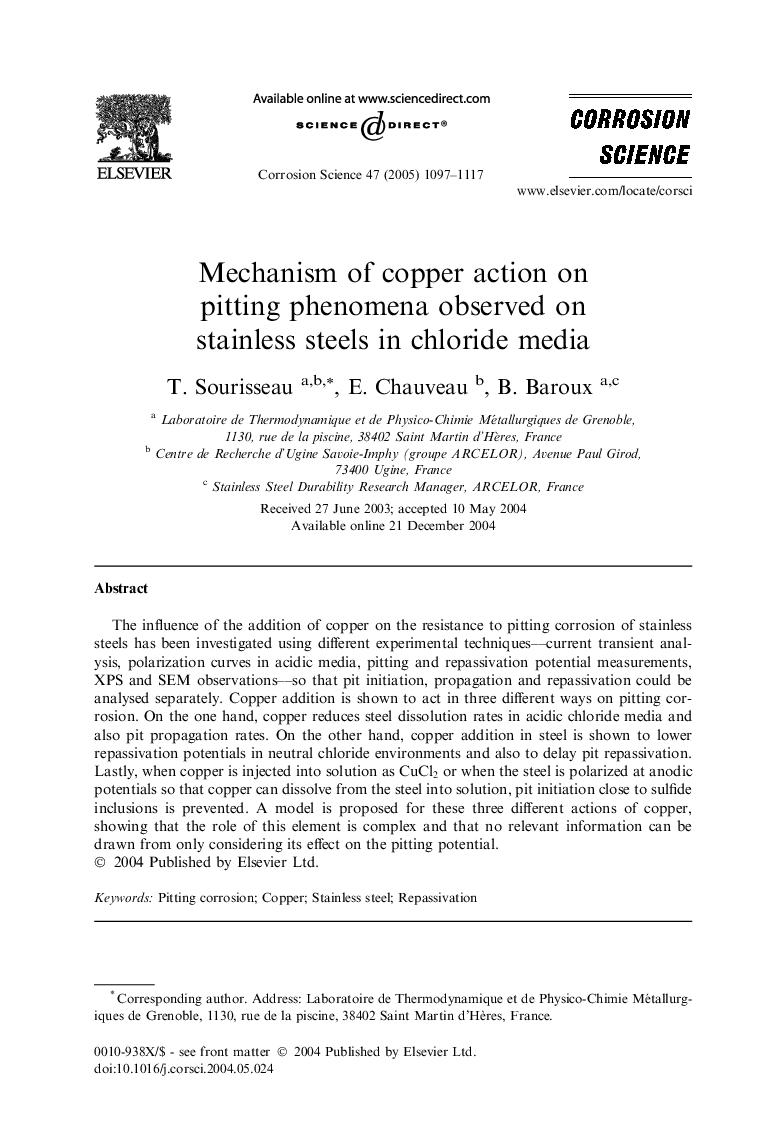| Article ID | Journal | Published Year | Pages | File Type |
|---|---|---|---|---|
| 10628749 | Corrosion Science | 2005 | 21 Pages |
Abstract
The influence of the addition of copper on the resistance to pitting corrosion of stainless steels has been investigated using different experimental techniques--current transient analysis, polarization curves in acidic media, pitting and repassivation potential measurements, XPS and SEM observations--so that pit initiation, propagation and repassivation could be analysed separately. Copper addition is shown to act in three different ways on pitting corrosion. On the one hand, copper reduces steel dissolution rates in acidic chloride media and also pit propagation rates. On the other hand, copper addition in steel is shown to lower repassivation potentials in neutral chloride environments and also to delay pit repassivation. Lastly, when copper is injected into solution as CuCl2 or when the steel is polarized at anodic potentials so that copper can dissolve from the steel into solution, pit initiation close to sulfide inclusions is prevented. A model is proposed for these three different actions of copper, showing that the role of this element is complex and that no relevant information can be drawn from only considering its effect on the pitting potential.
Related Topics
Physical Sciences and Engineering
Materials Science
Ceramics and Composites
Authors
T. Sourisseau, E. Chauveau, B. Baroux,
